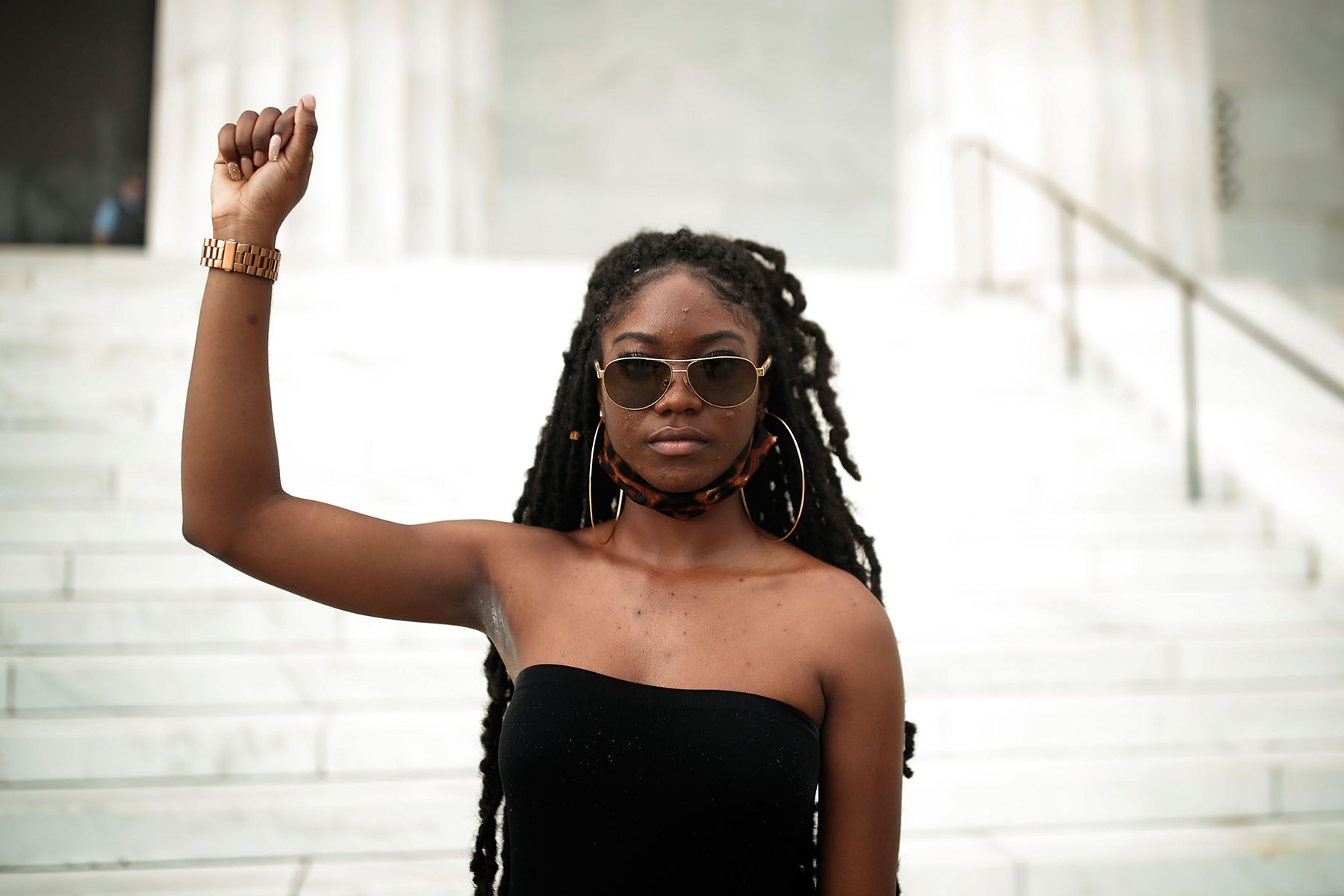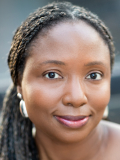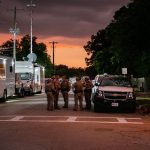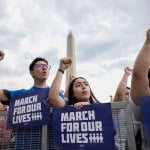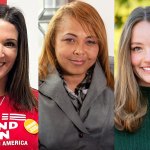Gun violence had touched Aalayah Eastmond’s life even before she was caught in the 2018 mass shooting at Marjory Stoneman Douglas High School in Parkland, Florida.
“Before Parkland, my uncle was shot and killed in Brooklyn, New York,” she said.
But Eastmond describes the Parkland shooting, which she lived through at 16 by hiding under a slain classmate, as the “breaking point” that drove her to become a vocal gun violence opponent. She has testified about the mass shooting before the Senate and House Judiciary Committees and is now an executive council member of Team Enough, the youth-led affiliate of Brady: United Against Gun Violence.
Firearms are the No. 1 killer of youth, and children and teenagers are commonly exposed to it as a result of domestic abuse and crime in their communities. Experiencing gun violence can hurt the academic performance of students, lower their odds of graduating and erode their trust in educators, according to Everytown for Gun Safety.
Although boys and men are more likely to suffer firearm-related deaths or injuries than girls and women, the latter, particularly women of color and trans women, are more likely to be targeted because of their gender identity or as a result of intimate partner violence.
Collectively, gun violence’s impact on the safety of schools, families and marginalized groups has inspired women students to take active roles in the prevention movement.
“Seeing Black trauma from gun violence really hurt me,” said University of Alabama student Makayla Jordan, 18, of her decision to join the anti-gun violence group Students Demand Action as a high school student in 2018. “Seeing Black mothers cry on the news, seeing George Floyd cry out for his mother when he was dying — Black women really motivated me to get into the movement.”
Young women such as Jordan have been on the frontlines of the gun reform protests sweeping the nation following the May 24 mass shooting at Robb Elementary School in Uvalde, Texas. They also serve in leadership roles in youth-led organizations, such as Team Enough, March for Our Lives and Students Demand Action, an Everytown offshoot, that work to combat gun violence. Many are pursuing college majors in law and politics that will position them to directly influence gun policy.
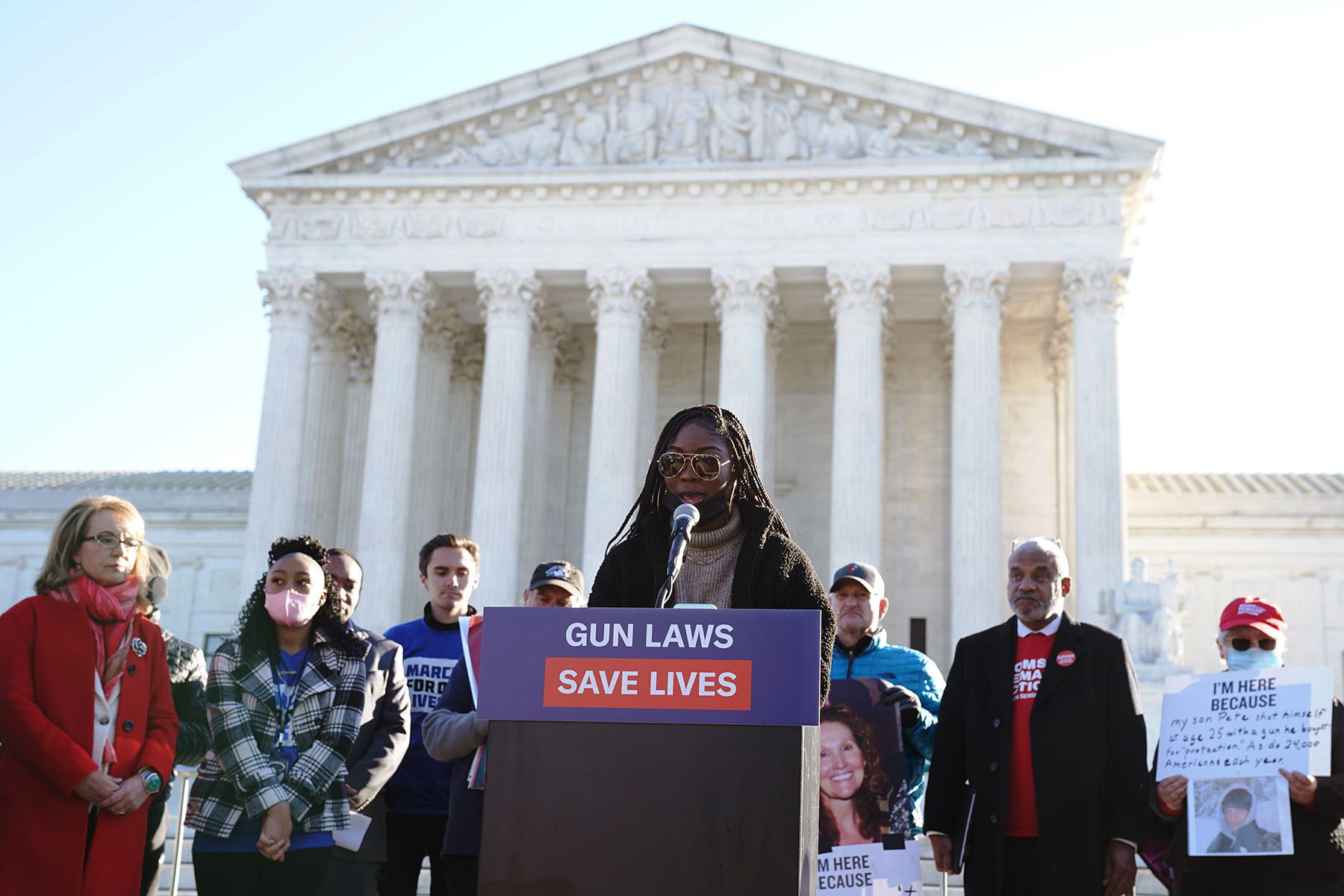
They are fighting for themselves, their loved ones, their communities and their schools.
“People often forget that women are the backbone of most of our progressive movements in this country,” Eastmond said. “So, I have noticed a lot of women involved [in gun reform], but that’s not something out of the ordinary that we haven’t seen before. I think women just naturally end up involved in progressive change.”
Eastmond is working toward change both as an activist and as a student. Now 21, she’s studying criminal justice at Trinity Washington University with the goal of becoming a criminal defense attorney. Although she continues to pursue her studies and her activism, taking part in a Team Enough march in Washington, D.C., on Friday, she struggles emotionally when firearm deaths dominate the news cycle, as they have after recent mass shootings in Uvalde and Buffalo, New York.
“It’s definitely frustrating and retraumatizing and scary,” Eastmond said. “It does create triggers for my PTSD. It’s hard to see on the news and…on social media. But it’s just our reality and we have to figure out how to stop this issue.”
Over the past week, hundreds of students have flocked to the nation’s capital to demand that lawmakers take action on gun violence, an issue that disproportionately puts their lives at risk and adversely affects their education.
Chloe Gayer, 18, recalled how intimate partner violence wrecked her ability to concentrate on school. She said three years ago, her then-boyfriend held a gun to her head and threatened to pull the trigger if she upset him.
“I am very lucky that I am academically gifted, but these last couple of years have been really hard,” said Gayer, who graduated from her Iowa high school last week. “I was one of those kids who just started missing a lot of days of school because my mental health got to me, so it got really hard to have the motivation to go to school.”
A dean eventually confronted her about missing class, and offered guidance and support. Gayer said that she’s grateful for the wakeup call. In addition, speaking out about gun violence has helped her heal and connect with other survivors.
On average, 70 women per month are shot and killed by their intimate partners, said Sarah Burd-Sharps, the senior research director at Everytown. The number of women, like Gayer, who have had an intimate partner terrorize them with guns but not actually shoot them is likely even higher.
Beyond that, domestic violence is a frequent culprit of gun deaths involving minors. Between 2009 and 2018, 72 percent of youth killed in mass shootings — shootings with at least four victims — were casualties of domestic violence, Everytown found.
“People are very surprised to learn that in more than half of these [mass shooting] situations, there was domestic violence involved, that the shooter killed a family member or an intimate partner during the course of the rampage,” Burd-Sharps said. “A third of mass shooters had some sort of domestic violence history.”
The Uvalde shooter allegedly sent threatening messages and rape threats to young women online and shot his grandmother before killing 19 children and two adults at Robb Elementary School. The gunman who killed 20 children and six adults at Sandy Hook Elementary School in Newtown, Connecticut, in 2012, first murdered his own mother. Other mass shooters, such as the perpetrators of massacres near the University of California, Santa Barbara, and at Virginia Tech, expressed misogynistic views and behaviors.
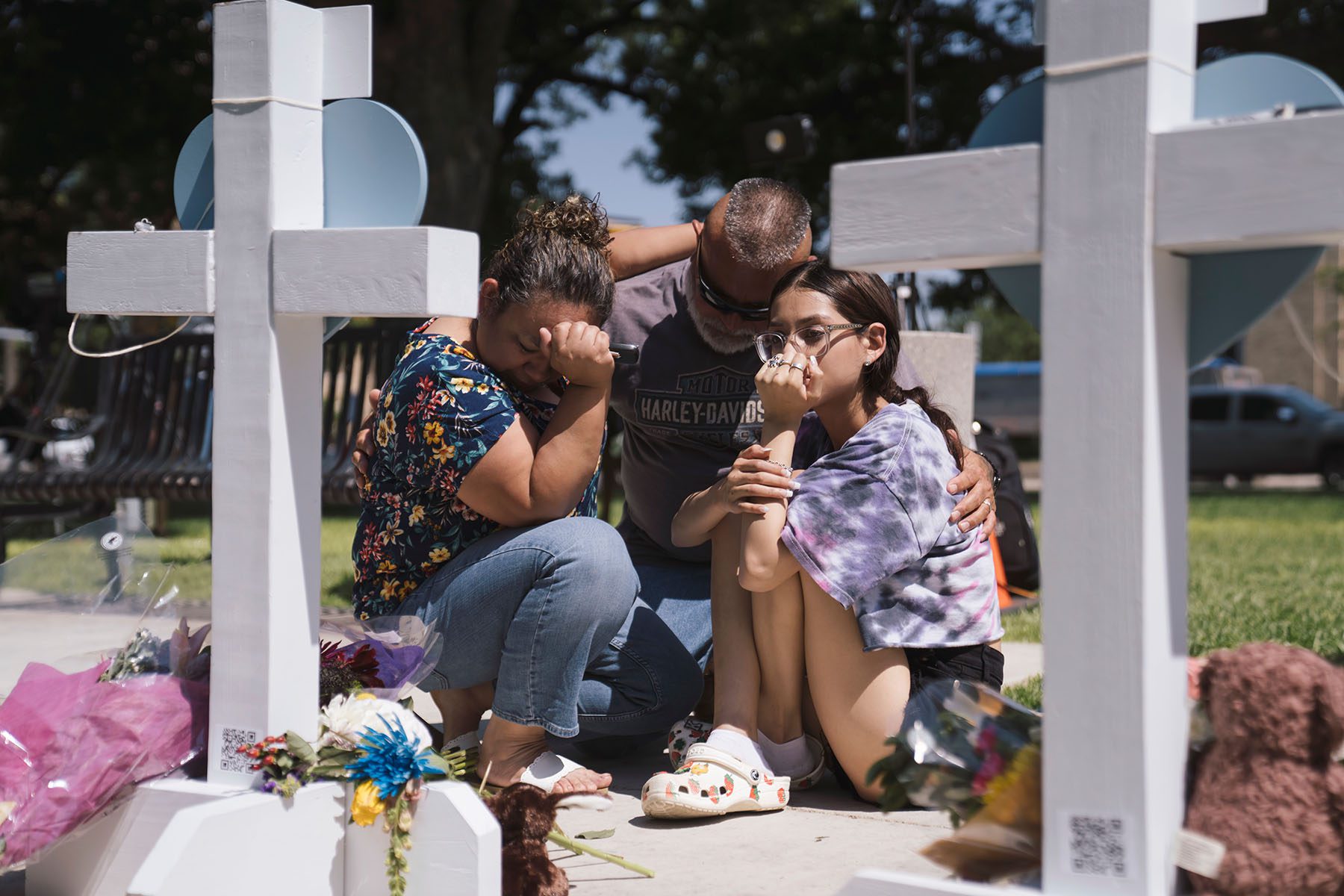
Although firearms are now the top killer of all youth, those of color are most affected, even when shots ring out on school campuses. Nearly two-thirds of shootings at K-12 schools between 2013 and 2019 took place at schools where children of color made up the majority of students, according to Everytown. Black youth are 14 times more likely than their white peers to be killed by a firearm, and Latinx youth are three times more than their white peers to be.
Most of the gun violence that youth experience doesn’t garner the kind of media attention that major mass shootings do.
“Mass shootings of the type that we saw in Uvalde and Buffalo make up about 1 percent of gun deaths every year,” Burd-Sharps said. “This is not to say that they’re not incredibly traumatizing and tragic, and you can see the mobilizing that occurs in response to them, but they make up less than 1 percent of gun deaths every year So every day the toll of gun violence in our communities just is relentless.”
Exposure to gun violence has a direct impact on student achievement. It is linked to difficulty concentrating, lower test scores and higher dropout rates. Just witnessing gun violence, let alone surviving it, can worsen a student’s mental health.
Robin Gurwitch, a professor in the Duke University Department of Psychiatry and Behavioral Sciences and the Center for Child and Family Health, specializes in supporting children who’ve experienced trauma.
“Children exposed to gun violence have a higher risk for issues like anxiety and depression,” Gurwitch said. “Their view of the world as a safe and secure place gets rocked on its heels. We see stress reactions. They may have a harder time with concentration and attention and learning in school, so learning is a little bit more challenging for them.”
While young children may behave disruptively after a gun violence incident, adolescents may begin to withdraw and lose interest in activities they enjoyed previously. Both children and teens may suffer from intrusive thoughts about the incident that make focusing on schoolwork difficult.
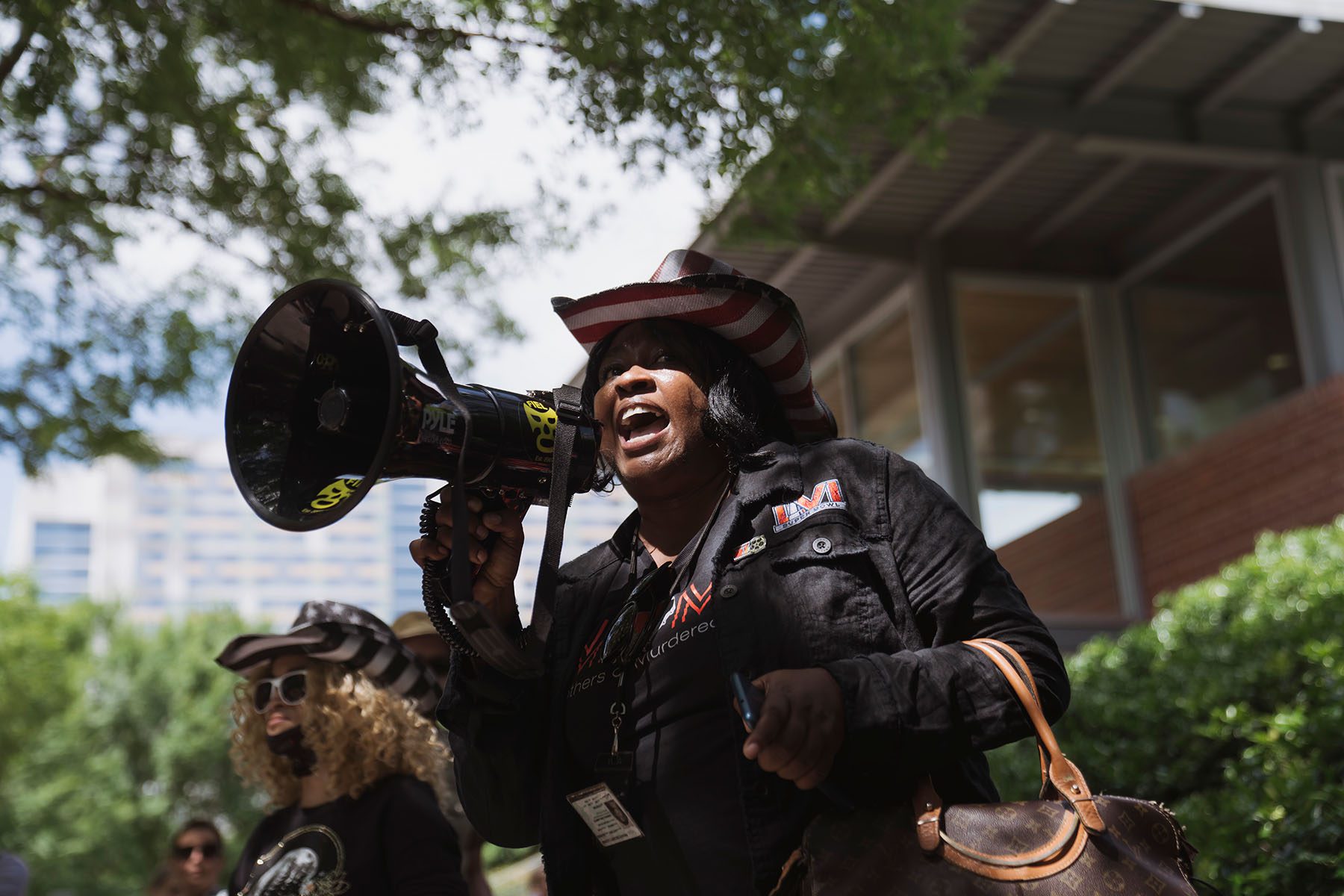
“It’s hard to pay attention to what the teacher is saying if that image flashes in your head and you have a moment where your whole body is reacting,” Gurwitch said.
Often, students who’ve experienced gun violence simply need a caring adult to support them through their trauma or grief.
“The more supportive adults a child has in their world, the more connected they are, the better they do,” Gurwitch said.
Even watching news coverage of gun violence can affect a student’s mental health. Seo Yoon “Yoonie” Yang was in her first year of high school, about an hour away from Parkland, when the mass shooting took place at Marjory Stoneman Douglas High.
“It was really difficult to go to school in the days afterwards knowing that…there was lots of talk about how there might be plans for a copycat shooter in the same vicinity,” said Yang, who went on to organize fundraisers for Parkland survivors.
She and her classmates went from discussing mundane topics like grades to the classrooms they’d prefer to be in if a mass shooting were to happen, said Yang, who later started a Students Demand Action chapter.
“Everyone was really on edge,” she said.
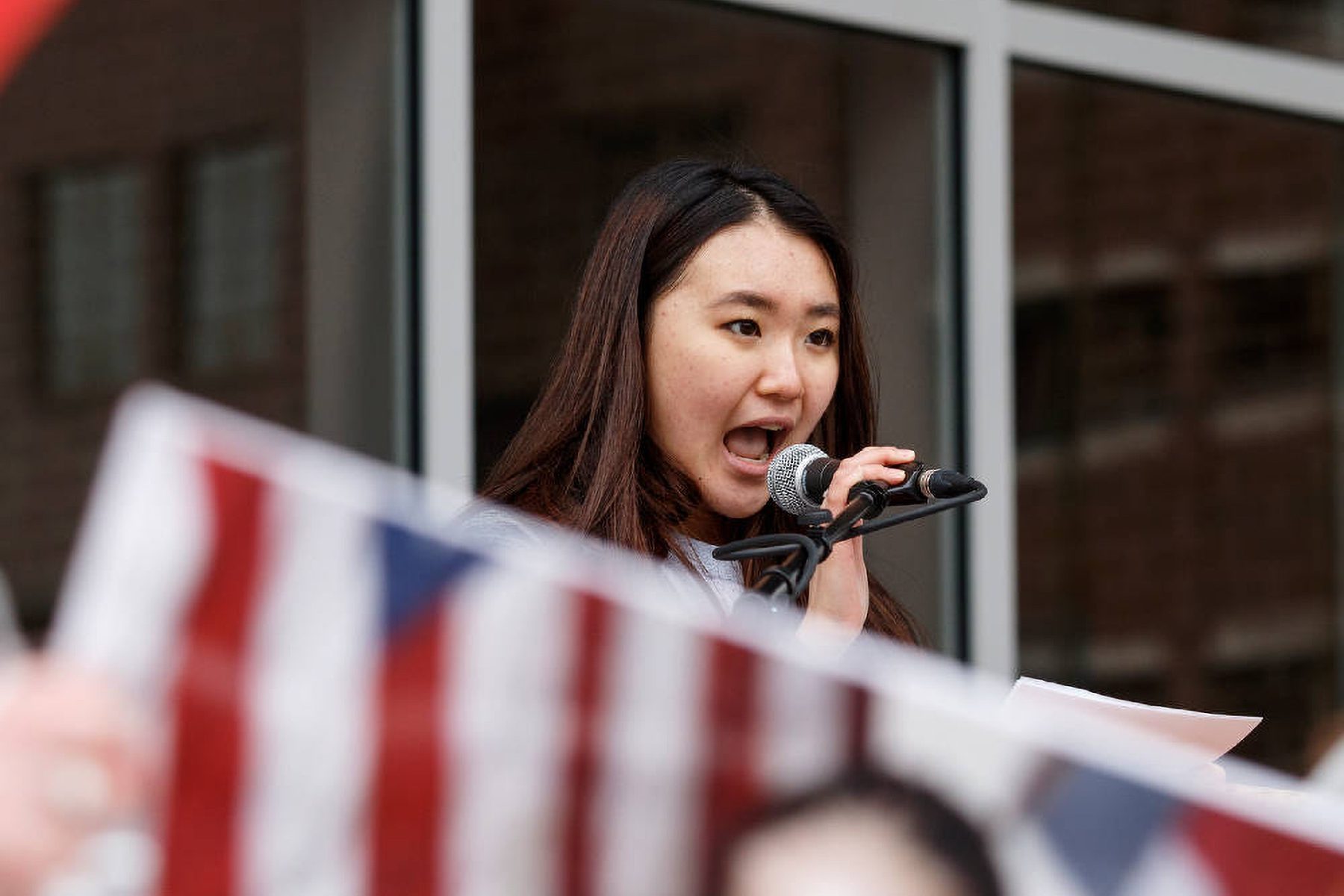
Although Ariel Hobbs lives in Houston, more than 1,100 miles away from Parkland, she was so distressed when the mass school shooting happened there that she missed classes for a week.
“My nerves were so shot at that point,” said Hobbs, then a college sophomore.
Hobbs felt uneasy when she returned to school and saw individuals walking around campus with guns. In 2018, the 5th U.S. Circuit Court of Appeals allowed Texas’ campus carry law to proceed. First signed into law in 2015 by Gov. Greg Abbott, the legislation permits people to carry handguns in the buildings of public colleges and universities.
“There were people that actively walked on my campus, openly showing that they had a concealed weapon,” Hobbs said. “So that in itself made me nervous.”
Whether students experiencing distress because of gun violence are in K-12 schools or college, it can be hard to access mental health care on campus. The American School Counselor Association recommends one school counselor for every 250 students, but the average ratio of counselors to students in K-12 schools is one for every 415 pupils. School social workers and psychologists are also in short supply at K-12 schools. The National Association of School Psychologists recommends a ratio of one school psychologist per 500 students, but the average national ratio is one school psychologist per 1,211 students.
In college, students may not fare much better. Sixty percent of college students have difficulty accessing mental health care, according to a Healthy Minds survey. Eastmond said that she has struggled to find a mental health care provider who specializes in trauma while attending college in Washington, D.C.
“I think it’s really important to have resources for students before tragedy has happened,” she said. In high school, she added, there were too few counselors to go around for students. Gurwitch recognizes the problem and has trained teachers and other school personnel, such as cafeteria workers and bus drivers, to better support youth by being active listeners, noticing behavioral changes in students and adjusting their expectations of student trauma survivors.
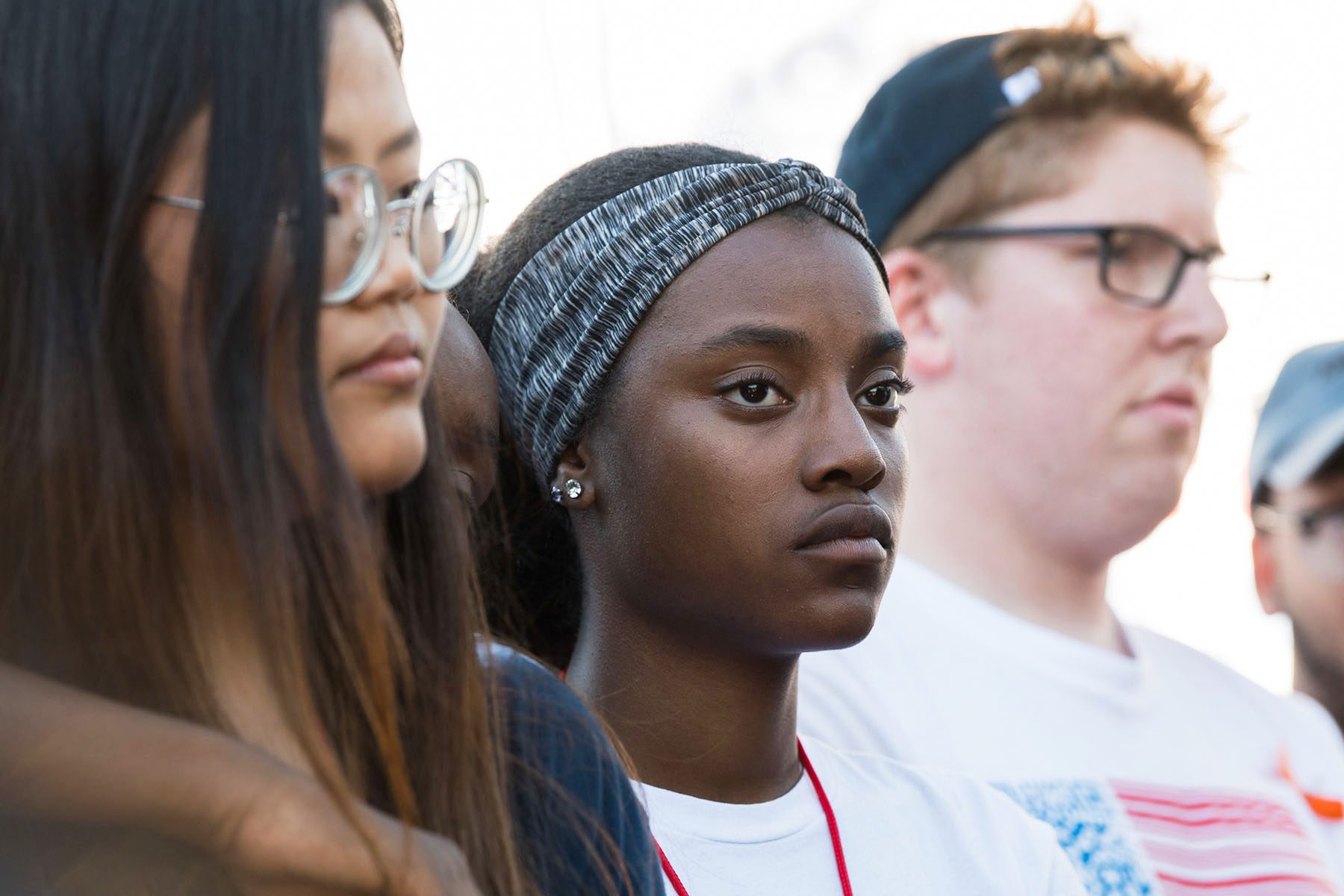
Many youth find that participating in activism or another meaningful activity helps them manage their mental health, Gurwitch said. Through her involvement in Students Demand Action, Gayer grew close to members of Moms Demand Action, who supported and encouraged her. Hobbs turned her anxiety into action after the Parkland shooting by co-founding the Houston branch of March for Our Lives. A national organization with chapters across the country, March for Our Lives will hold a demonstration in Washington, D.C. on Saturday and 300 other March for Our Lives protests will take place in various locations that day. Hobbs has noticed that young women overwhelmingly make up the group’s leadership.
“All of the women that work for March are just really passionate about the issue and wanting to end gun violence,” Hobbs said. “Especially, those of us that are from communities of color are very passionate about providing a spotlight on marginalized communities.”
Although some activists feel real change is possible after the Uvalde mass shooting, Eastmond is cautiously optimistic because people felt similarly after Parkland. What she knows for sure, she said, is that youth are tired of gun violence.
“Young people are fed up of fearing for their lives because of something as crazy as a firearm,” she said. “We hope that people in positions of power and leaders of this country can take an initiative, like young people have, to work towards a better future.”
